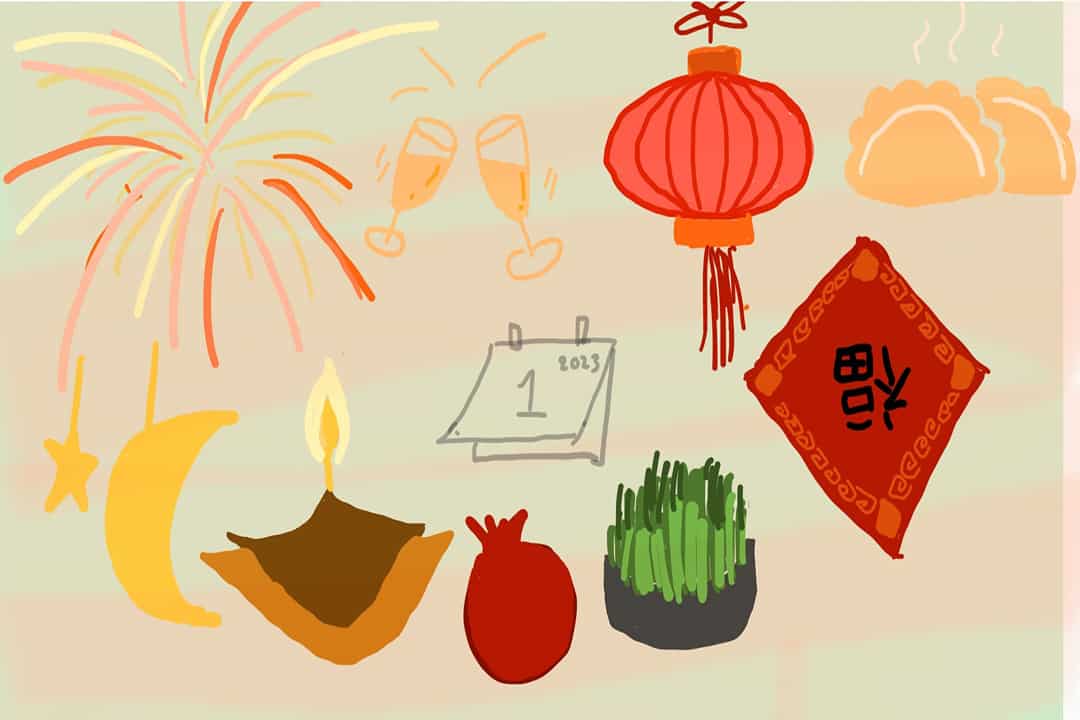Every year, my family and I celebrate New Year’s the same way — together, huddled around the TV, counting down the seconds until the ball drops and we begin another year. Then, we watch the fireworks and celebrate with the rest of the world. With each explosion that sets the sky alight, we welcome the new year into our homes and our hearts, little by little.
The celebration can also make us wonder why we celebrate each year that comes to pass. Surely, choosing to celebrate at the end of every year, rather than every week, month, or decade, cannot be arbitrary, seeing how similar celebrations occur in so many diverse cultures around the world.
Casting aside the specific significance of New Year’s, however, reveals a far more interesting question: why do we hold celebrations to mark the passing of time? What significance do these celebrations really hold?
Our January celebration of New Year’s comes from the time of the Romans, when the solar-based, Julian calendar was first introduced. The beginning of the new year was a celebration honouring Janus, the god of transitions, beginnings, and time. It seems fitting, then, that in the days leading up to each new year, we undergo a transition, both in our individual lives and as a collective society.
This transition in preparation for the new year is not limited to our Gregorian calendar. New Year’s celebrations from around the world in various cultures using different calendars have traditions centred around the transition into a happy and prosperous New Year’s.
Lunar New Year’s is traditionally celebrated across East Asia between January and February every year. These celebrations include cleaning the home to rid it of evil; serving lucky food such as dates, peanuts, and lotus seeds; and other traditions that vary between households in different regions and countries.
For Nowruz, traditionally celebrated by those with a Persian background and in Ismaili Muslim communities, Iranian families traditionally prepare a Haft-seen table. The table contains seven items — a lucky number — that symbolize different aspects of springtime and renewal. Examples typically include garlic, hyacinth, coins, sweet pudding, sprouts, vinegar, and an apple. Traditions vary among others who celebrate the holiday, but the significance remains the same: celebrating the start of spring and the resulting renewal of nature.
Both of these celebrations, much like many other New Year’s celebrations globally, share a common theme of rebirth.
This theme of reflection and rebirth is not limited to any individual New Year’s celebration. Rather, it speaks to something much larger. Perhaps it’s only human for us to take any opportunity we see to wipe the slate clean and start anew. After all, we see this narrative reflected year after year in our media — with each New Year’s roundup or predictions, we become increasingly aware of the possibility that the new year might bring.
The reflections on the past year and predictions for the upcoming 12 months that we see in our media encourage us to do the same. To reexamine the highs and lows of the past year and determine how we might go forward in the next 12 months, where we might go, and who we might become. Reflecting and resetting in preparation for the new year gives us the opportunity to put in a meaningful effort to change, at least in thought if not sustained action — to live happier and more fulfilling lives.
However, the goal for total rebirth that we might find in a drastic New Year’s resolution or encapsulated in the phrase ‘new year, new me’ runs the risk of being overzealous and inevitably leaving us disappointed when we lapse back into old habits. Though we may wish otherwise, complete and immediate change are often mutually exclusive.
Perhaps the answer to why rebirth is an illusion — and consequently, why it so often eludes us — lies in the fact that the transformation we truly desire is not rebirth but sustainable growth. The fundamental changes to our lives that we so desire — such as crafting more positive habits, mindsets, and reactions — require a continuous effort to become permanent. It is through that growth which we may see our lives transformed from year to year, and reap the true benefit: the satisfaction of triumph over challenge.


